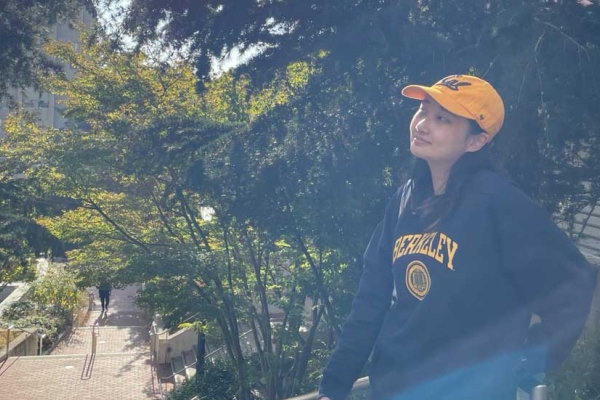If you’re interested in applying to any of our semester- or academic year–long visiting-student programs, you’ll need to include a statement of purpose.
Why is this important?
Your statement of purpose allows us to assess your understanding of the program and your academic preparedness, as well as help us to understand your personal, academic and professional goals. We review your statement of purpose to determine if the program is a good fit for you, and advise you on courses and campus opportunities that will help you achieve your goals.
Not sure where to start when writing this important piece of the application?
Then read on!
Part 1: Introduce Yourself!
Tell us about your academic, personal and professional experiences that have prepared you for this rigorous program. What sparked your desire to study at Berkeley and specifically with your program of choice?
Yes, we also look at your transcript as part of your application, but your transcript doesn’t say who you are as a person, as a student! Are there successes you’ve had in and outside of school that make you ready for a Berkeley education? Do you have extracurricular interests or activities that you hope to continue or start at UC Berkeley or in the Bay Area?
Pro tip: This should be short and to the point; don’t spend a great deal of time on autobiography. Remember: The Statement of Purpose in total must be 800–1,000 words (1-2 single space pages in 12-point font), so don’t devote too much space to this introductory part. The majority of your statement of purpose should be spent on the following section:
Part 2: Why are you interested in this program?
Ask yourself the following questions and write down the first 5–10 items that come to mind.
1. How will participating in this program help you achieve your academic, professional or personal goals?
2. What courses are you excited to take and why? Do you understand that not all courses may be available?
Now take a look at the answers you jotted down to that first question. Are you seeing a general theme? Supplement that information with the titles of those courses that make you excited to come to Berkeley. What do you hope to learn in those classes that will help you reach your goals?
Tip #1: Pose a question, define a problem or indicate a theme that you would like to address. This should be an ample paragraph!
Tip #2: Look on the program’s website for information about the curriculum and the professors. Are there professors whose research interests parallel yours?
End your statement in a positive manner, indicating your excitement and readiness for the challenges ahead of you. Emphasize everything from a positive perspective and write in an active, not a passive voice. Demonstrate everything by example; don’t say directly that you’re a persistent person, show it.
Optional Step 3: Anomalies
Please explain any anomalies in your academic transcript such as a failed course, a low GPA or a change in your major concentration. If there is nothing unusual about your transcript, you do not need to include this section.
Step 4: Proofread, proofread, proofread.
Would a grammatical error on your scholarship essay really keep you from your educational goal? It could, according to our Career Services team.
“The biggest thing that we've noticed in reviewing any kind of document is that the minute there is a grammatical error, it pulls us away from the content,” they say. “It's an automatic red flag. If we see that the author’s first language isn’t English, then we will take this into consideration and give them a bit of leeway, as learning another language is a feat unto itself that shows how adaptable and versatile the individual is in other ways.
“Overall, grammar is important, and it points to a variety of skills that employers, schools, et cetera, look for in candidates. However, any good reviewer of an application will take context into consideration and look at supporting documentation or details, if available, that paint a more comprehensive approach of a candidate.
If you have any questions or need additional assistance, please schedule a one-on-one admissions advising appointment today!



